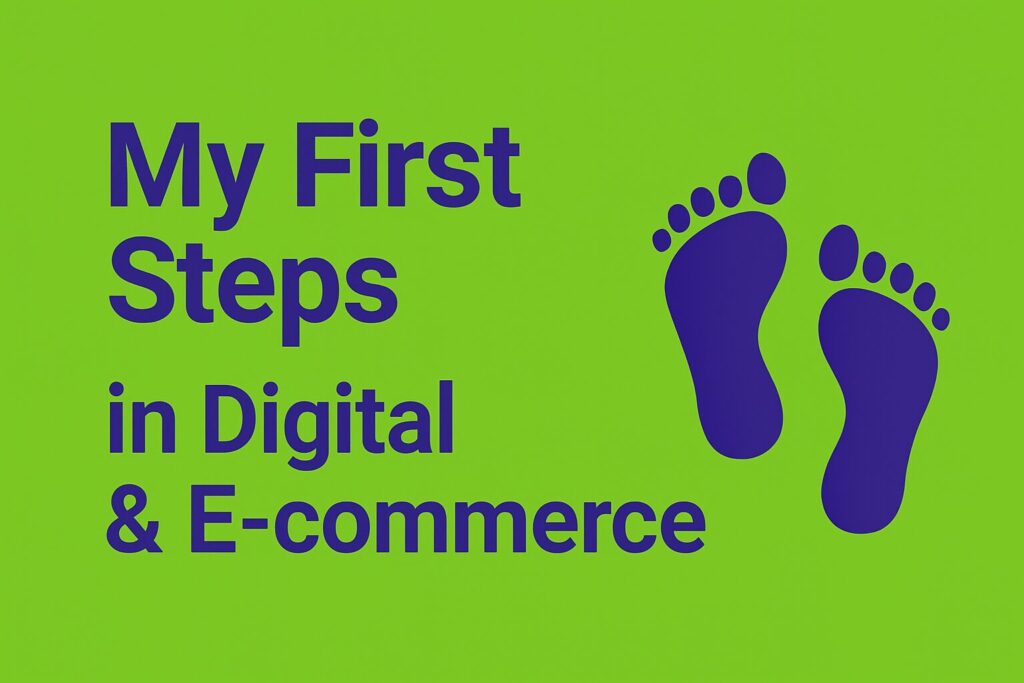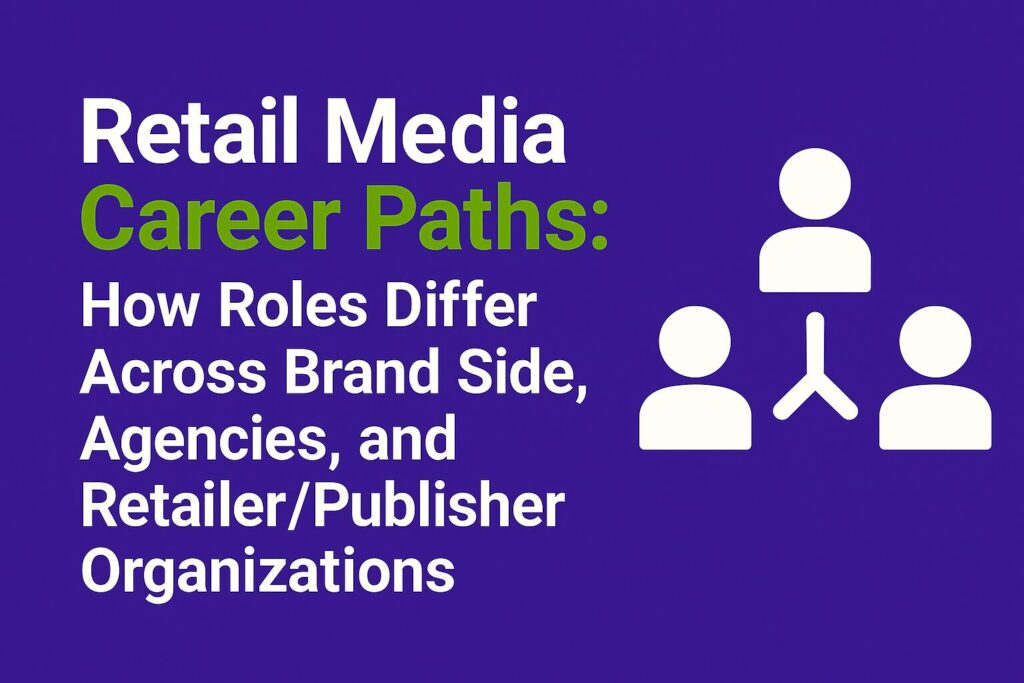The transition—moving from digital marketing to retail media—represents a natural yet consequential evolution for marketing professionals who wish to influence outcomes at the point of purchase. This article delineates the principal differences between the two disciplines, presents a first‑hand case study of the pivot, and offers a structured plan to facilitate an informed shift.
1 · Digital Marketing and Retail Media in Comparative Perspective
Professionals contemplating moving from digital marketing to retail media will recognise familiar methodologies, but the performance horizon changes markedly, as illustrated below.
| Dimension | Digital Marketing | Retail Media |
|---|---|---|
| Primary Environments | Google, Meta | Amazon, Walmart, Carrefour on‑site |
| Core Performance Metric | Click‑throughs, impressions | Verified sales, basket value |
| Stage of the Customer Journey | Awareness & consideration | Decision & checkout |
| Budgeting Cadence | Annual or quarterly | Intraday optimisation |
Source: Gartner Retail Media Survey 2024
2 · Case Study: From Agency SEO to Amazon Retail Media
The author’s professional trajectory offers a concise illustration of the pivot.
- Agency Foundation (Pre‑2020) Responsible for SEO sprints and social‑media calendars, with success measured in traffic lift and share of voice.
- Paid‑Media Specialisation (2018 – 2020) Managed Facebook Ads and Google Shopping, applying segmentation and ROAS analysis to refine spend allocation.
- Retail Media Inflection (2020 onward) Appointment to Amazon Ads introduced Sponsored Products and DSP campaigns; real‑time SKU‑level results confirmed the definitive movement—moving from digital marketing to retail media.
Observations
- Existing campaign‑management skills transfer readily, albeit closer to the point of sale.
- Cross‑functional liaison (merchandising, supply‑chain, creative) becomes indispensable.
3 · Four Key Lessons
- Velocity is Paramount. Retail auctions adjust by the minute; an iterative mind‑set is essential.
- Data Fluency Drives Optimisation. Mastery of TACoS, ROAS, and ASIN health metrics supersedes traditional CPM analysis.
- Retailer Collaboration Unlocks Inventory. Proactive engagement with category managers frequently secures closed‑beta placements.
- Creative Alignment Remains Critical. Compelling imagery coupled with value cues outperforms keyword saturation.
4 · Recommended Actions for Professionals
| Action | Objective |
| Obtain the Amazon Sponsored Ads Certification | Validate domain expertise |
| Arrange a mentorship or job‑shadowing session | Acquire operational insights |
| Propose a controlled on‑site pilot (e.g., US$ 300 test) | Demonstrate revenue accountability |
| Participate in the Retail Media Professionals community on LinkedIn | Expand knowledge network |
Documentation Tip: Maintain a provenance log of bid adjustments and resultant sales performance; this portfolio substantiates proficiency.
5 · Frequently Asked Questions
Do new tools need to be procured?
Not necessarily. Spreadsheet modelling and rigorous analytical thinking remain foundational.
Is retail media relevant beyond consumer‑packaged goods?
Indeed. Apparel, home‑improvement, and numerous B2B segments now leverage on‑site advertising.
Are SEO competencies still applicable?
Yes. Concise, keyword‑optimised product copy is effectively SEO executed at SKU granularity.
6 · Conclusion and Next Steps
In summary, moving from digital marketing to retail media leverages established analytical and creative capabilities while placing them in a commercially immediate context. Professionals are advised to undertake a single, tangible action—such as enrolment in a certification or initiation of a pilot campaign—within the next seven days to advance the transition.
Further guidance is available in the complimentary Retail Media Career Blueprint, which outlines a 90‑day development trajectory.
Senior E-commerce & Retail Media Leader with 8+ years across Amazon and leading marketplaces. Focus on full-funnel strategy, programmatic retail media, and international media governance. Sharing frameworks and operating models for growth.



